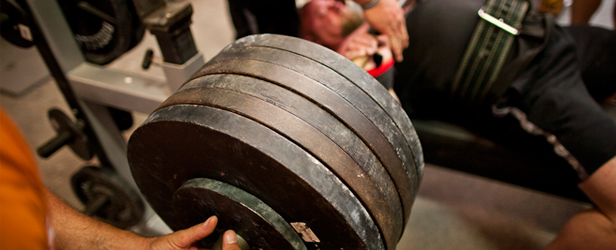
The concept of metabolic conditioning has to be without a doubt one of the most misunderstood topics in strength and conditioning today. It seems that every fitness guru has some different method for improving your “conditioning” with the aim of burning fat or improving performance for a specific sport. However, none of them really get to the heart of how energy production really works.
Because of this, almost all of them prescribe the same protocols for everybody in terms of work to rest periods or intensities, regardless of individual heart rates. This is essentially the same as telling everybody that they should squat five sets for five reps at 225 lbs, regardless of their strength levels or goals!
Doing sprints or squats for 30 seconds followed by one minute of rest—or whatever the advised protocol may be—can have totally different effects in two different people depending on a variety of factors. What might cause one person’s heart rate to shoot up to 170 might only cause someone else’s to hit 140. While one person might recover during the rest interval down to 110, someone else might still be at 130. One person may have an anaerobic threshold of 175 while the next person might have one of 165.
The point is that the exact same program can have totally different effects depending on which energy system is worked and how hard it is worked. There is no program or protocol that can be universally applied to everybody.
The other problem with most conditioning programs is that they fail to take into account that energy production has two parts to the equation—the metabolic law of supply and demand:
cardiac supply + muscular metabolism (demand) = energy production
How much energy you produce essentially comes down to how much oxygenated blood your heart can supply and how efficient your muscles are at producing energy through aerobic and anaerobic processes. When you fatigue, it can be because the cardiac system can’t supply enough oxygen or it can be caused by the muscular system itself not utilizing all the oxygen that it was supplied. Regardless of the cause, when there is not enough oxygen for aerobic metabolism, your anaerobic processes take over and you fatigue rapidly. Even anaerobic sports are built on a base of aerobic metabolism.
To properly develop your conditioning, both parts of the equation need to be considered. You need to improve not just the amount of oxygen your heart and vascular system can provide but also how efficient your muscles are at using it. This is accomplished through very specific and totally individualized training using the right kind of resistance training and cardiovascular exercise methods. In other words, conditioning is about much more than just following some one size fits all approach.
If you really want to turn your body into a fat burning furnace or push the limits of performance, you have to learn how to create a customized conditioning program—not one designed for everybody but one designed specifically for you. Go get yourself a heart rate monitor, and in part two of this article series, I’ll show you where to start.
Elite Fitness Systems strives to be a recognized leader in the strength training industry by providing the highest quality strength training products and services while providing the highest level of customer service in the industry. For the best training equipment, information, and accessories, visit us at www.EliteFTS.com.








